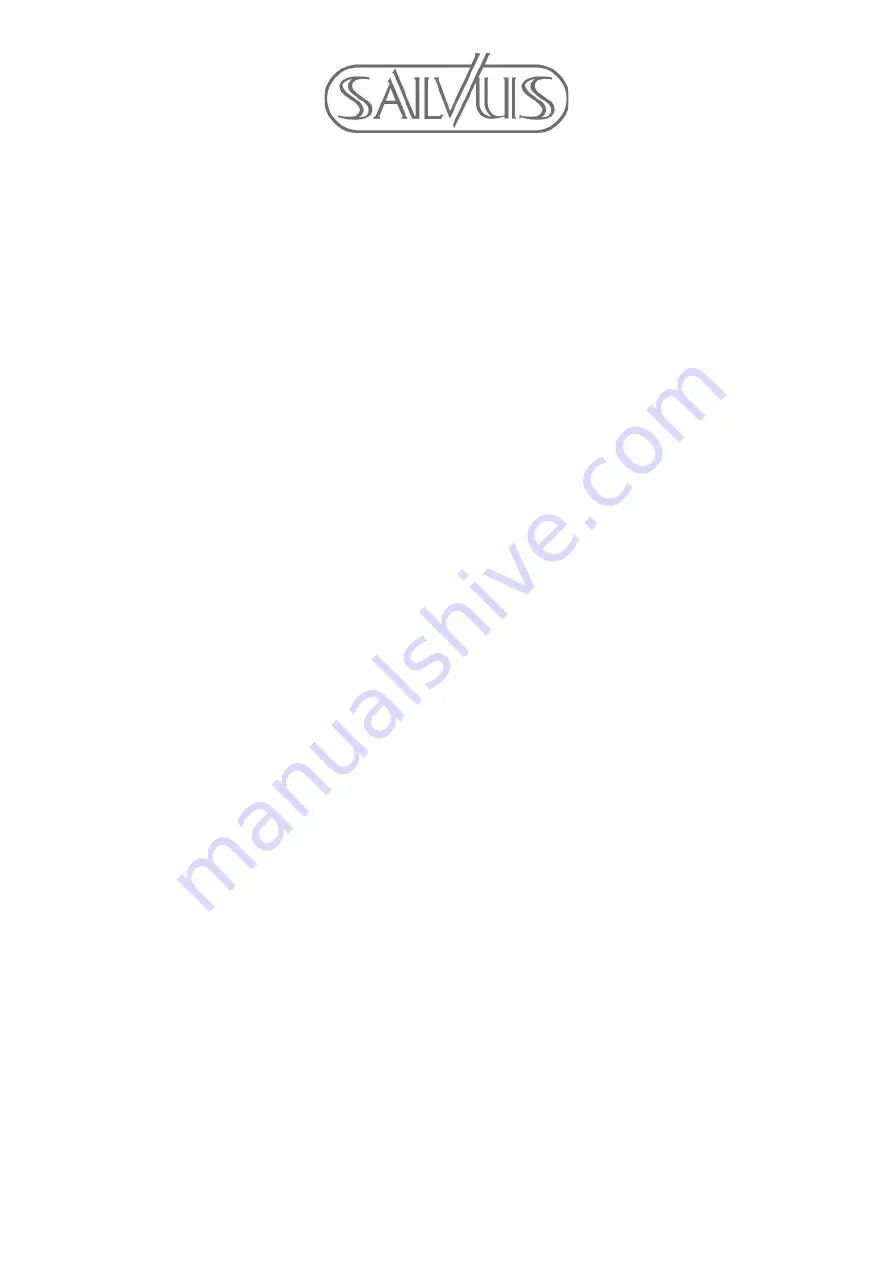
5.
Storing and charging batteries
The Salvus lithium-ion cabinet provides 230V of electricity to charge the batteries in it. Never exceed
the maximum amperage indicated.
Total power per charging point:
Maximum voltage
230V
Fuse
16A
Maximum power
3600W
Safe charging:
•
Use the battery’s original charger only.
•
Use the charging points as installed in the cabinet only.
•
On no account use multiple sockets and/or extension cables.
•
The cabinet can only work properly and safely and securely if the door is kept closed.
6.
Earthing
An earthing connection may be required depending on the client-specific use of the Salvus
lithium-ion cabinet. Seek advice from qualified and skilled personnel.
7.
Ventilation
•
Salvus lithium-ion cabinets are fitted with a mechanical ventilation system. This fire-resistant
ventilation grill consists of a frame and slats and is filled with thermally expansive material. If
the temperature exceeds 100°C, the grill closes and seals itself.
•
Ensure that the cabinet is in a well-ventilated room. Depending on its duration, a fire may
produce poisonous gasses.
•
The cabinet is installed with a mechanically ventilated smoke duct so that smoke and gasses
that are produced by any battery fire can be carried away safely.
8.
Opening the cabinet after a fire
•
Never open the cabinet door yourself if the alarm sounds. On models where they are installed,
warning lamps will also light up. Telephone the emergency services and leave it to the fire
brigade to open the cabinet.
•
Be warned! Depending on its duration, a fire may produce poisonous gasses.
•
Telephone the Nauta Service Team once the fire has been extinguished so that the cabinet can
be inspected to see if it can continue to be used.
•
For advice as to the disposal of damaged batteries, contact the manufacturer.


















